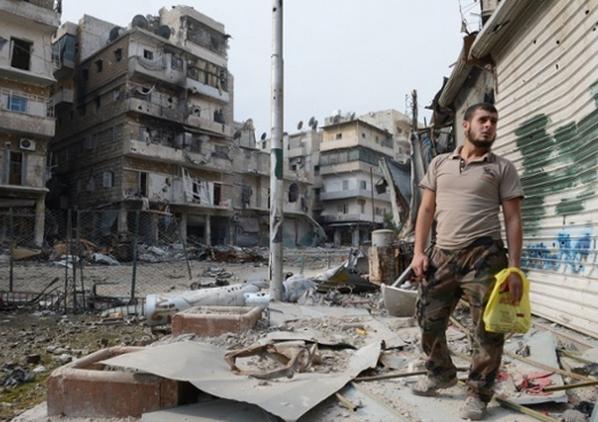Last week, the discussion was centered around the COIN (counterinsurgency) method of war, and the American policy discussion on the state of Afghanistan.
This article will delve more into the process of insurgency. The world is far from the time of the World Wars and the Cold War, where traditional war is a thing of the past. The American public has the responsibility to educate themselves prior to elections regarding foreign policy platform. Failure to understand the inner workings of war can only lead to American citizens electing a president that can, potentially, thwart U.S. foreign policy for the worse – and this is the Vendetta.
Counterinsurgency strategy (where a foreign entity counters the current regime) does not always favor non-violence or violence. The non-violent approach on counterinsurgency is widely viewed as the “hearts and minds” approach, which calls for a limited use of force and focuses on keying into to a country’s culture to improve socioeconomic factors as the pathway to successful counterinsurgency efforts. [ref] Isabelle Duyvesteyn, “Hearts and Minds, Cultural Awareness and Good Intelligence: The Blueprint for Successful Counter-Insurgency?” Intelligence and National Security 26.4 (2011): 445. Print. [/ref] However, the evidence on the success of this strategy is rather limited. The failure of “hearts and minds” approach is exemplified in current Afghanistan and previously Vietnam, which proved to be extremely lengthy and unworthy wars.
Instead, selective state terrorism is perceived as effective in counterinsurgency methodology. Selective state terrorism calls for the precise targeting of insurgent supporters – who provide food, sanctuary, monetary funds, and other such proponents of a successful insurgency. This selectiveness will greatly hinder the insurgents, as it strips them of key supporters and deters future supporters. [ref] Alexander Downes, “Draining the Sea by Filling the Graves: Investigating the Effectiveness of Indiscriminate Violence as a Counterinsurgency Strategy,” Civil Wars 9.4 (2007): 421. Print. [/ref] Selective state terrorism is best exemplified in Libya, where the U.S. used key targets to take down Qadafi.
In a typical insurgent struggle (where the people of the nation are fighting against the current regime), a non-violent approach will always prevail as superior to a violent approach. A non-violent strategy entails pursuing engagement through “social, psychological, economic, and political means without the threat or use of violence.” [ref] Maria J. Stephan and Erica Chenoweth, “Why Civil Resistance Works: The Strategic Logic of Nonviolent Conflict,” International Security 33.1 (2008): 9, Print. [/ref] Scholars Ackerman and Rodal have discussed significant success in the strategy, claiming it to have double the triumph over its violent counterpart. [ref]Ibid, 120.[/ref] Researchers Stephen and Chenoweth declare that non-violence results in a fifty-three percent success rate, standing tall next to the twenty-six percent rate of violent efforts. [ref]Ibid, 8.[/ref] Beyond the numerical advantage, non-violence has been noted to deliver more favorable outcomes as a result of the strategy, as the strategy acclaims more long-lasting, peaceful, and democratic results as directly opposed to violent methods. [ref] Peter Ackerman and Berel Rodal, “The Strategic Dimensions of Civil Resistance,” Survival 50.3 (2008): 119. Print. [/ref]
Insurgents that adhere to the ideological tactics of non-violent resistance hope to achieve their goals through the removal of authority from leader figures, the deployment of the masses, and significant loyalty shifts among the public. [ref] Ibid, 111. [/ref] The delegitimization of rulers is based on the idea that consent of the public is vital to the legitimacy of rulers. If people are not willing to obey the ruler, his stance is arbitrary. Accompanying delegitimizing rulers, the mobilization of the public is essential. Large numbers of involvement and representation among the involvement is key in creating legitimacy and power among the movement. [ref]Ibid, 117-118.[/ref] The mobilized public must also believe their actions are going to be recognized and will foster change, they must believe they will win the insurgency in order to win it. A strong confidence is needed amongst the mobilized in the purpose of their efforts.[ref] Ibid, 116.[/ref] And further, the process is spearheaded by loyalty shifts. Campaigns that extract shifts in loyalty amongst civilian public servants and security officials are more victorious. [ref] Stephen and Chenoweth, 42[/ref]
A successful case of non-violent struggle is demonstrated in the recent Egyptian conflict that eventually overthrew Mubarak. The protesters followed through to success by delegitimizing Mubarak, a mass mobilization, and the loyalty shifts of their security officials. The Egyptians, as a population, decided they would no longer recognize Mubarak as their leader and would no longer obey his power. [ref] Stephen Zunes, “Nonviolent Revolution in the Middle East,” Peace Review 23.3 (2011): 401. Print.[/ref] The involved citizens were sick and tired of the repressed government, and people from all corners of Egypt came together regardless of personal affiliations, and displayed their grievances through protests and rallies in Tahrir Square.[ref]Ibid, 398.[/ref] In this case there was also a loyalty shift in the military, which ultimately defected and were instrumental in Mubarak stepping down. The military were in fact the ones who eventually pressured Mubarak to step down. [ref] Revolution in Cairo, PBS, WGBH Educational Foundation, Feb. 2011. Web, http://www.pbs.org/wgbh/pages/frontline/revolution-in-cairo[/ref]
Success of a non-violent struggle is dependent on encompassing a comprehensive coalition, realistic goals, and a staunch adherence to non-violence. [ref] Ackerman and Rodal, 118.[/ref] A comprehensive coalition ties into the idea of the mass mobilization, specifically calling for a broad array of people to join the movement. The notion is that the assortment and collectivity brings strength to the movement. In contrast with a violent tactic, which entails the membership and efforts of mainly young men, non-violence can involve various different types of citizens. [ref] Zunes, 402.[/ref] With a broad alliance at hand, the diverse citizenry had a realistic and achievable goal in mind. Although the masses all had their ideas on what the new government would look like, they all came together with one goal – to overthrow Mubarak. [ref]Revolution in Cairo.[/ref] Moreover, the coalition was strict in their adherence to non-violence. This proved crucial, because as a repressive regime Egypt knew well how to deal with violent uprisings. However, violence proved to be a curveball, the regime did not know to counteract the non-violent tactics of the middle-aged, old, or young – the millions who protested, refused to pay taxes, engaged in strikes, and other violations. [ref]Zunes, 402.[/ref] The state of Egypt has yet to recover from the overthrow of Mubarak, and is currently in divided between secularist groups vying for rule. The road to a successful government is being paved today, but could not have been done without the non-violent overthrow of the repressive Mubarak regime.
Take Action:
To support domestic and international peace, sign various petitions at Peace Alliance Organization.
To support a U.S. stance of international peace, follow and support United For Peace.




